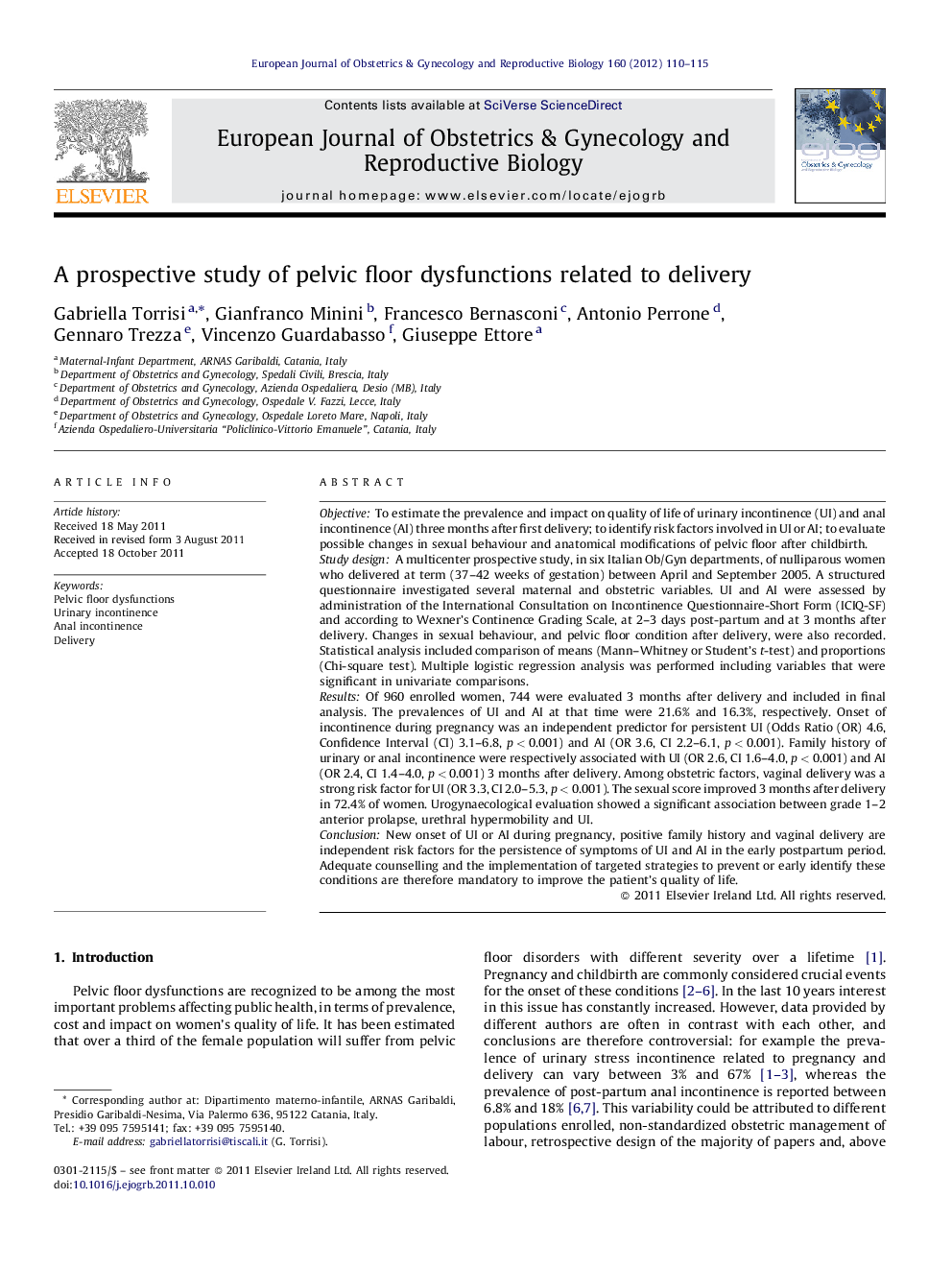| Article ID | Journal | Published Year | Pages | File Type |
|---|---|---|---|---|
| 3920436 | European Journal of Obstetrics & Gynecology and Reproductive Biology | 2012 | 6 Pages |
ObjectiveTo estimate the prevalence and impact on quality of life of urinary incontinence (UI) and anal incontinence (AI) three months after first delivery; to identify risk factors involved in UI or AI; to evaluate possible changes in sexual behaviour and anatomical modifications of pelvic floor after childbirth.Study designA multicenter prospective study, in six Italian Ob/Gyn departments, of nulliparous women who delivered at term (37–42 weeks of gestation) between April and September 2005. A structured questionnaire investigated several maternal and obstetric variables. UI and AI were assessed by administration of the International Consultation on Incontinence Questionnaire-Short Form (ICIQ-SF) and according to Wexner's Continence Grading Scale, at 2–3 days post-partum and at 3 months after delivery. Changes in sexual behaviour, and pelvic floor condition after delivery, were also recorded. Statistical analysis included comparison of means (Mann–Whitney or Student's t-test) and proportions (Chi-square test). Multiple logistic regression analysis was performed including variables that were significant in univariate comparisons.ResultsOf 960 enrolled women, 744 were evaluated 3 months after delivery and included in final analysis. The prevalences of UI and AI at that time were 21.6% and 16.3%, respectively. Onset of incontinence during pregnancy was an independent predictor for persistent UI (Odds Ratio (OR) 4.6, Confidence Interval (CI) 3.1–6.8, p < 0.001) and AI (OR 3.6, CI 2.2–6.1, p < 0.001). Family history of urinary or anal incontinence were respectively associated with UI (OR 2.6, CI 1.6–4.0, p < 0.001) and AI (OR 2.4, CI 1.4–4.0, p < 0.001) 3 months after delivery. Among obstetric factors, vaginal delivery was a strong risk factor for UI (OR 3.3, CI 2.0–5.3, p < 0.001). The sexual score improved 3 months after delivery in 72.4% of women. Urogynaecological evaluation showed a significant association between grade 1–2 anterior prolapse, urethral hypermobility and UI.ConclusionNew onset of UI or AI during pregnancy, positive family history and vaginal delivery are independent risk factors for the persistence of symptoms of UI and AI in the early postpartum period. Adequate counselling and the implementation of targeted strategies to prevent or early identify these conditions are therefore mandatory to improve the patient's quality of life.
